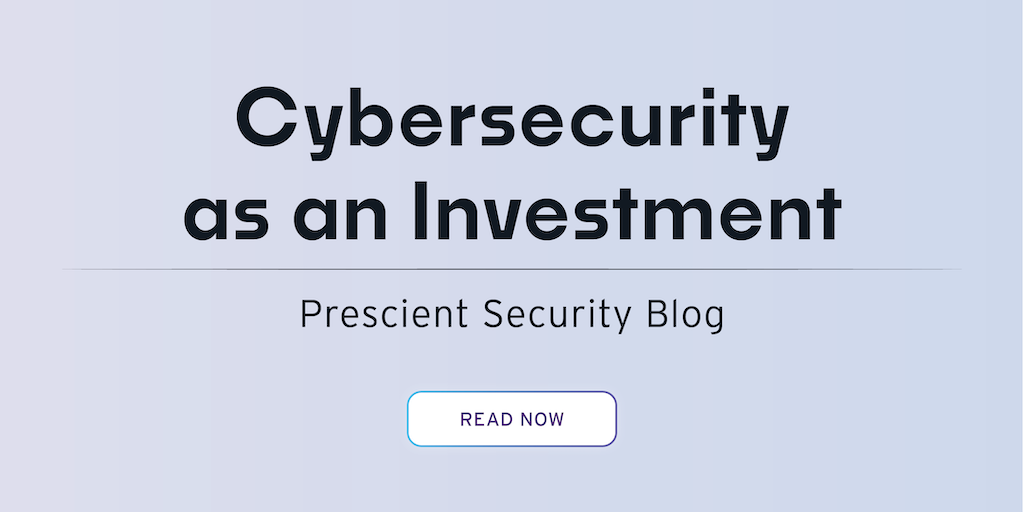Beyond Checking Boxes: How Compliance Penetration Testing Offers Real Security Insights
Penetration testing has been around as long as there have been regulations around data protection. Organizations have been performing penetration testing in a variety of ways, from compliance-based testing to best practice testing, to Red/Blue/Purple teaming, to continuous monitoring/testing in order to gain a better understanding of their cybersecurity posture. Prescient Security has had experience with all of the varieties of ethical hacking, and we want to help our clients with the testing that best fits each organization. In this post, we will cover Compliance Penetration Testing and how organizations can best take advantage of the requirements of regulatory bodies.
Contents
- Advantages of Compliance Penetration Testing
- Check-The-Box Compliance Testing Is A Liability
- Compliance Penetration Testing and Frameworks
- Continuous Penetration Testing Education Is Key
- Penetration Testing As An Ongoing Process
- Why Is It Important To Continuously Conduct Penetration Testing For A Strong Security System?
- Allocating Resources For Penetration Testing
- Prescient Security and Compliance Penetration Testing
Advantages Of Compliance Penetration Testing
Compliance penetration testing, while a standard practice to meet regulatory requirements, can provide more insight into your threat landscape than simply checking a box. When executed effectively, it can provide deep visibility that can help enhance an organization’s overall security posture. Clients seeking compliance-driven tests designed to meet the specific requirements of regulatory frameworks like PCI DSS, HIPAA, and SOC 2 are often focused very specifically on the framework and thus overlook the bigger picture of security. In today’s climate, this approach could leave some vulnerabilities unaddressed.
Check-The-Box Compliance Testing Is A Liability
One major issue with traditional check-the-box compliance testing is that it prioritizes form over function. Organizations may complete the necessary paperwork and follow prescribed steps to demonstrate compliance during audits, but this approach can create a false sense of security. If the client is focused only on checking the box, other attack vectors will be left unaddressed, leaving the organization vulnerable. A strict box-checking mentality can cause organizations to miss the bigger picture. They might focus narrowly on specific regulatory requirements without considering how different compliance frameworks overlap or how they can be integrated into a cohesive security strategy. This fragmented approach can lead to inefficiencies and gaps in security coverage, ultimately undermining the organization's overall security posture.
To move beyond this check-the-box mentality, organizations should reframe compliance penetration testing as a comprehensive and proactive security strategy component. While this method can uncover vulnerabilities present during testing around that specific framework, it fails to account for vulnerabilities that may exist and need to be addressed. In contrast, comprehensive compliance penetration testing leverages OWASP’s Top 10 methodologies to find threats beyond checking the box for the framework. This enables organizations to right-size their security program while also future-proofing the environment. Testing beyond the regulatory factors enables more agile shifts towards new frameworks as the company grows.
Compliance Penetration Testing and Frameworks
Compliance penetration testing has a targeted outcome, focusing on assessing the organization's security measures against the criteria set by specific regulatory frameworks. This type of testing ensures that all the regulatory requirements are met, often emphasizing specific areas mandated by the regulations. For example, a PCI DSS compliance penetration test will focus on the security of payment card data environments, while a HIPAA compliance test will concentrate on protecting patient health information.
Continuous Penetration Testing Education Is Key
Continuous education and training for security teams are essential to keep up with the evolving threat landscape and the latest penetration testing techniques. Regular training sessions help security professionals stay informed about new vulnerabilities, attack vectors, and mitigation strategies. This ongoing education ensures that the team can effectively conduct penetration tests and respond to any findings promptly. Additionally, it fosters a culture of security awareness within the organization, which is vital for maintaining robust security practices.
Penetration Testing As An Ongoing Process
Integrating penetration testing into the overall security strategy ensures that it is not viewed as a one-time activity but an ongoing process. This integration allows for regular assessments and security measures updates based on the penetration test findings. By embedding penetration testing into the broader security framework, organizations can continuously improve their security posture and adapt to new threats. This proactive approach helps identify and address vulnerabilities before attackers can exploit them.
Why Is It Important To Continuously Conduct Penetration Testing For A Strong Security System?
Organizations must conduct multiple penetration tests to ensure improvements have been successfully implemented and security gaps have been closed. Retesting against the baseline of an initial test provides an organization with insight into whether vulnerabilities have been remediated or not.
Allocating Resources For Penetration Testing
Resource allocation and budgeting present additional hurdles even with a clear and manageable scope. Penetration testing can be resource-intensive, requiring skilled personnel, time, and financial investment. The cybersecurity skills gap exacerbates this issue, making it challenging to find qualified professionals to conduct thorough tests. Utilizing automated tools can help streamline some aspects of the testing process, but manual testing is often necessary to identify more sophisticated vulnerabilities. Organizations must strategically allocate their resources, ensuring they have the budget required and skilled personnel to conduct effective penetration testing while investing in training and development to build internal capabilities.
Prescient Security and Compliance Penetration Testing
Prescient Security offers a comprehensive suite of services, including comprehensive compliance penetration testing, to ensure organizations meet regulatory standards while maintaining robust security postures. Our compliance penetration testing is strategically positioned with OWASP Top 10 methodologies guided by the regulatory framework requirements, providing detailed insights beyond mere compliance to enhance overall security strategies.
.png?width=50&name=Employee%20Spotlight%20(138%20x%20138%20px).png) By
By


